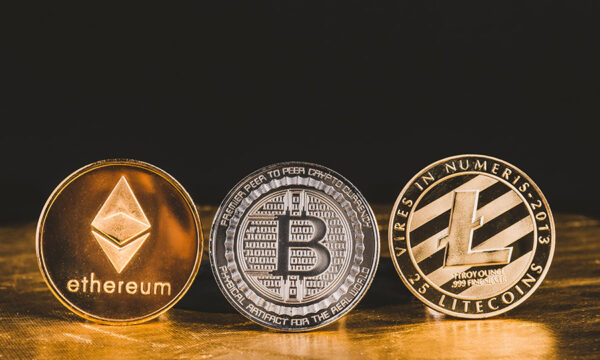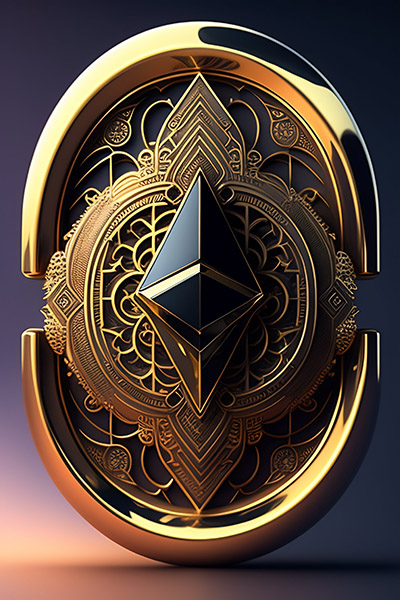Exploring the World of Digital Currency
LETS BEGIN WITH A CAVEAT:
I am not a crypto expert, I am not a programmer, I am not a financial advisor. I am simply someone who in 2020 saw the potential in Crypto and started to research and invest. I do not claim to make you rich but what I do want to do is introduce you to my understanding of the world of Web 3 and the blockchain so that you get a better understanding of what it is before it is adopted by the masses like the internet was in the 90’s and early 2000’s! …with that said lets look at the internet very quickly…..After a slow start in the early 1990s, internet use surged from 77 million in 1996 to 412 million in 2000. By 2010, worldwide internet use had grown to 1.98 billion, and today it sits at 4.9 billion. Lets use these numbers just as a hypothetical example of early adoption and early investing: According to Charlie Bilello, director of research at Pension Partners, every $10,000 invested at Amazon’s IPO in 1997 would today be worth $4.8 million
…and with that estimation lets move into the new world we all seem to be facing
WHAT IS CRYPTO
Trying to understand crypto can be daunting. The idea of incredible gains and soaring markets is very tempting to dive right in but something holds you back because you have that voice saying “if its too good to be true, it usually is a con or a scam”
This is true, never trust a “sure” win or anyone promising you guaranteed gains.
The Oxford definition of crypto is as follows:
cryptocurrency
noun
- any system of electronic money, used for buying and selling online and without the need for a central bank
- Cryptocurrency represents one of the most promising internet technologies in years.
- ‘Altcoin’ is a catch-all term for cryptocurrencies based on the Bitcoin system.
- Cryptocurrency is software. Every function, from how transactions are recorded to how data is stored, is dictated by code.
- Especially for cryptocurrencies whose main function is to act as money, cryptocurrency transactions are typically stored in a type of database known as a blockchain (other cryptos use unique technology, but the gist is the same).
- What we think of as cryptocurrency, for example 1 Bitcoin, is just numbers recorded on a cryptocurrency’s blockchain. Another word for that stand-in for value is “token” (often also called a “coin”).
- Cryptocurrencies are created by algorithms that rely on cryptography. That is why it is called “crypto” currency. Every transaction relates back to unique cryptographic codes that secure the network.
- Cryptocurrency software is decentralized and distributed, meaning it is hosted on many peoples’ computers across the world instead of just on one server by one company.
- The algorithms generally are written to award coins to computers that add transactions to the blockchain. The process of adding transactions to the blockchain is known as mining.
- The code of the cryptocurrency defines things like maximum supply, mining rewards, etc.
- Thus, for most cryptocurrencies, the main way new coins are created is by people all over the world running hardware that adds transactions to the blockchain. Otherwise, cryptocurrency tokens are created by other mechanisms contained in a cryptocurrency’s software.
- Lastly, the code for almost all cryptocurrencies is public, so anyone can check how coins are created.
FACT: Because the supply and inflation of a given cryptocurrency is defined by code, it is known upfront whether a coin is inflationary or deflationary. The only way to change that is to change the software. To change the software, the majority of computers running the software have to agree on an upgrade. In most cases, something like a change to the rate of supply would result in a “fork” (a new version of the software). Given all of this, it is unlikely the supply or rate of issuance of a coin like Bitcoin would ever be changed. Thus, we can be confident the only coins that will ever be issued are the ones defined by the code.
Inflationary currencies have no limit to how many units are in circulation, while deflationary currencies have a max supply. Other factors remaining the same, the buying power of inflationary currencies reduces as more units are printed.
Lets get trading!
WHERE IS CRYPTO TRADED?
Cryptocurrency can be purchased using fiat currency (£, $, € etc) on something called an exchange.
A cryptocurrency exchange, or a digital currency exchange, is a business that allows customers to trade cryptocurrencies or digital currencies for other assets, such as conventional fiat money or other digital currencies
There are more than 19,500 cryptocurrencies in the world, but you will only find a small fraction of them listed on the most popular exchanges. This is because trading platforms only list a coin if it passes a thorough evaluation process. Choosing the best crypto exchange with the most coins is important, but so are fees and trading volume.
What is the “Best” exchange to use?
Well this will differ depending on your experience but here are 3 exchanges that I feel are a good place for you to start trading
Coinbase – really easy to use, massive adoption, very wide range of coins to purchase but is the most expensive in terms of fees
Etoro – more traditional platform where stocks are also available to trade so you can have one portfolio platform which is quite an appeal. Etoro also gives you access to other traders so you are able to copy their trades which makes it far less complicated and automated
Kucoin – much more complicated to use, fees are much lower than coinbase, much more coins on offer
The below chart shows volume trading for the various exchanges.
https://coinmarketcap.com/rankings/exchanges/
HOW DO I SETUP AN ACCOUNT ON AN EXCHANGE
Coinbase








